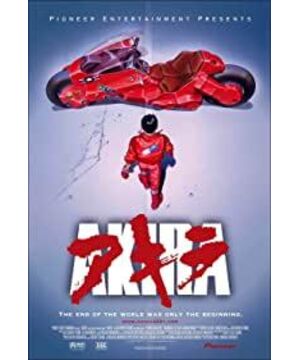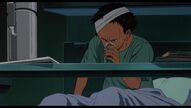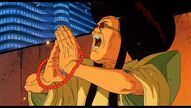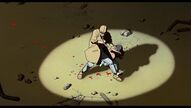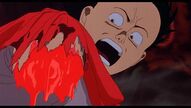I really don't understand this ending.
When I saw K's explanation of akira's nonsense, I felt that this must be a metaphysical work. Of course, sci-fi films always have bugs, as long as they are not so inconsistent, they can still be enjoyed. The same is true of AKIRA's film.
In terms of characters, Tie Xiong is a relatively successful portrayal. What will a small person with low self-esteem do after he has absolute power is a relatively new proposition now. Tetsuo's character who desires to be unrestricted by Jintian and has no self-reliant power will use it unreservedly to realize his ambition after gaining power, and then he will not stop even if he loses control. In fact, Tetsuo is also the incarnation of Japan itself. After the Black Ship Incident, he was controlled by others. After the rise of militarism, he committed evil everywhere, and was finally leveled by the American father (of course, I don't know if the director has this meaning). But in fact, I think this kind of character still needs to be explored. Although it is already very tense, it can be more profound.
But other characters are more masquerading: ignorant and greedy politicians, brave and determined colonels (in fact, they are brave and do not do anything, knowing that ordinary weapons can't beat them, you fucking use SOL from the beginning, if one is scrapped, You can't borrow from other countries or encircle Tiexiong or lay down a few tactical traps, Jintian tmd can hit with a laser gun), the kind-hearted three children, the big brother's temperament but cheerful and childish Jintian, I don't know what it is The character of K (Is the meaning of the female protagonist's existence is to be possessed and connected to the male protagonist? I really don't understand this role).
As for the plot, apart from the metaphysical AKIRA setting and ending, the protagonist's halo like Jintian, Jintianshen madly giving up his life after falling in love with the heroine at first sight, and the colonel's catchy IQ, it's still ok.
The painting is undoubtedly excellent, and many of the pictures are also very imaginative, that is, the movements and expressions of the characters give people a feeling of excessive force. Among them, the hallucination of Tetsuo where the three children in the ward turned into dolls and the part where Tetsuo finally swells into a baby are very powerful.
The use of the soundtrack is also quite bold, and the rough breathing and percussion sounds strongly render the apocalyptic atmosphere.
I personally don't feel the dystopian core of this animation very much. At this time, people's development level doesn't seem to have reached the level of utopia (just my humble opinion, I hope to give advice). And I have no feelings for the theme of anti-technology and anti-superpower. Although I like the style of Otomo Keyang, my evaluation of this work is below EVA.
Of course, considering that this is an old work of the last century, the greatest significance should be pioneering. It should have been quite a novel work back then, and now it looks like a classic.
View more about Akira reviews


